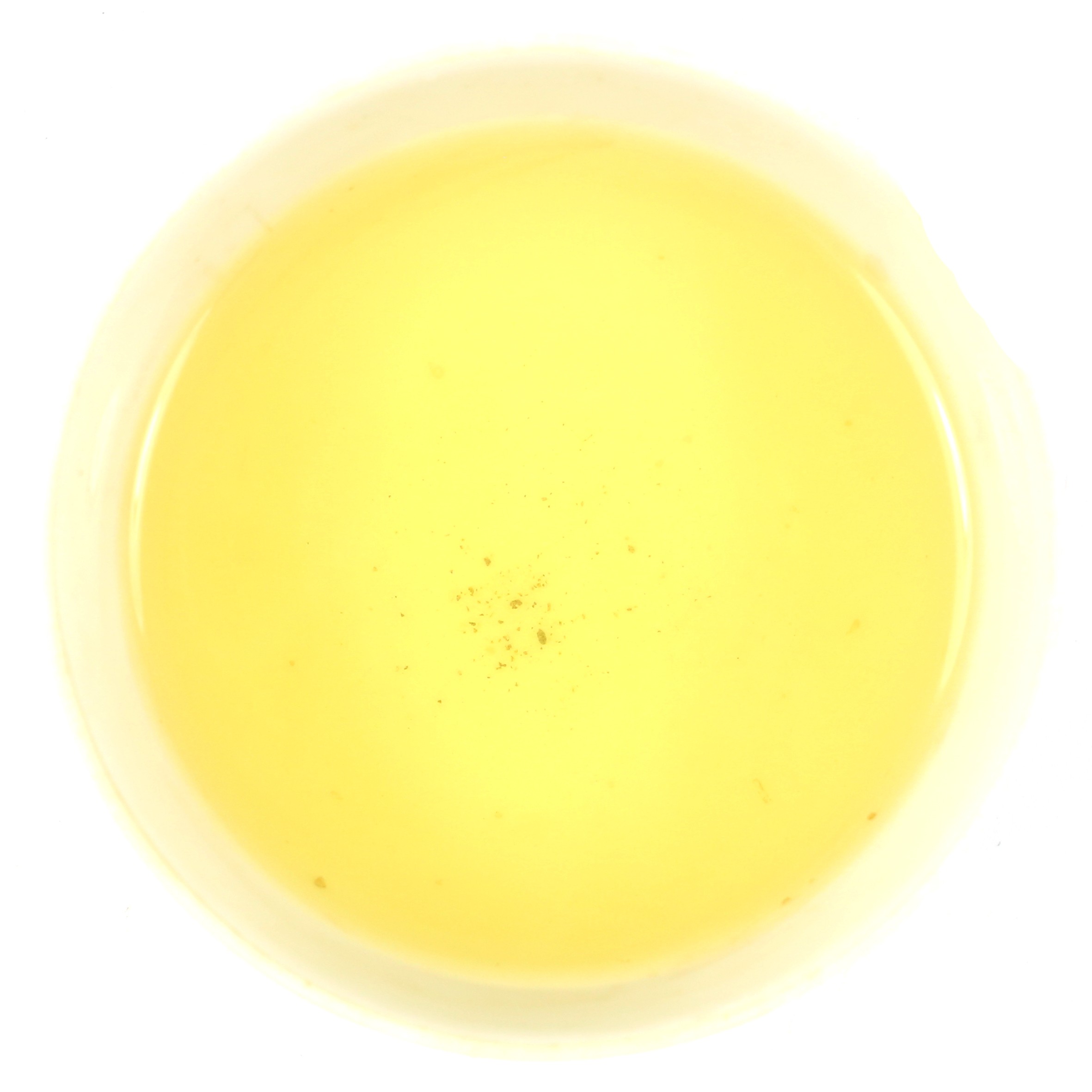.
Oolong Brewing Guide

1 Teaspoon
Add 1 teaspoon per person and one for the pot.

80⁰c - 90⁰c
Boil using fresh water, at a temperature of 80⁰c - 90⁰c.

2 - 3 Mins
Steep for 2 - 3 minutes, depending on personal preference.
About Product
-
Product Description
Formosa (present day Taiwan) has shared a long and expansive history with tea, particularly Oolong Tea. Our very special Formosa Oolong Dung Ting Tea stands testament to that history and likewise represents the future of the Taiwanese tea industry. This beverage is produced in the Nantou Province of the country at a relatively low elevation.
It is considered darker than most Oolongs of this style, but offers a delicate floral character and rich liquor. Formosa Oolong Dung Ting Tea, when consumed as part of a healthy and active lifestyle, can greatly improve digestion and may even strengthen bones according to some scientific studies. For whatever reason you decide to drink this tea we are proud to share it with you and your family. So, start a new tradition today with Formosa Oolong Dung Ting Tea.
As famous as Formosa Oolong Tea is, its story actually begins in China, not Taiwan. China was allegedly the birthplace of Oolong Tea, although the exact date of its creation remains a mystery. Some historians suggest that Oolong Tea was created as a tribute to reigning emperors during the Song Dynasty (906 – 1279 CE). Others believe that Oolong Tea was first created in the Wuyi Mountains of the Fujian Province, China. It is likely we’ll never know, although one of the most famous legends refers to a man and a deadly snake.According to this tale, the man in question had been a tea farmer tending to his crop one day when he was confronted by a poisonous serpent. As a result, the farmer dropped the tea leaves he was then held in a basket and ran away. When he returned the following day, he found that these leaves had oxidised, and in his curiosity, he decided to brew them in hot water and try it. The result was unexpected, yet delicious. But as fascinating as this story is, it’s likely just a tale, nothing more.
Once Oolong Tea had established itself in China, production moved to Formosa as well. This was at a time when the island was still part of China, with many Chinese immigrants travelling to Formosa to start a new life in tea farming. This largely took place during the Qing Dynasty (1636-1912), particularly during the 19th Century. In 1866, a British trader named John Dodd began championing Taiwanese teas on the world market.His influence saw Formosa rise from obscurity to become one of the best locations to grow and produce quality Oolong Tea. Large-scale industrialisation later swept through Formosa following the Japanese occupation of the island in 1895. This likewise brought about mechanisation, and soon after, productivity was greatly increased. This remains the case today, even after the end of the Imperialist Japanese conquest in 1945, and the independence movement that followed.
Type of Tea: Loose Leaf Oolong Tea.
Origin: The Nantou Province, Taiwan.
Brewing Instructions: Brew using freshly boiled water left to cool to temperatures between 80 and 90 degrees. Following this, infuse for 2 to 3 minutes.
How to Serve: Formosa Dung Ting Tea is best served without accompaniments.
Tasting Notes: This wonderfully floral infusion is brimming with flavour and is likewise complemented perfectly with an equally enticing aroma. This smooth, delicate beverage is very easy-drinking, and leaves a refreshing aftertaste that lingers on the palate long after you have drained your cup.
Colour in Cup: Pale green liquor with light yellow highlights.
Benefits of Oolong: Drink Formosa Dung Ting Tea for improved digestive health. Consuming this tea on a frequent basis, especially before large meals, can help your body to alkalize foods in the digestive system. It can also reduce inflammation in those with acid reflux and ulcer problems. This tea is also mildly antiseptic, meaning that when consumed hot, this beverage can clear bad bacteria in your stomach. -
Delivery Information
We offer reliable delivery services through Royal Mail to ensure that your orders reach you on time.
Here are the main points you should be aware of:
- Standard UK Delivery: £3.95 excluding delivery charge.
- Delivery Times: Orders are processed and dispatched within 2-5 working days but they may take longer during busy times. It is worth noting that all our orders are packed by hand in order to maintain the quality.
- Free Delivery: We are delighted to provide free shipping for UK orders over £35*. Moreover, customers from Europe can enjoy free shipping for any purchase above €75*. Furthermore, we offer free delivery in the USA for all purchases exceeding $125*. Please note terms and conditions may apply.
- Tracking: When your package is sent you will receive a tracking number via email so as to keep tabs of its progress.
International Shipping
We do ship worldwide meaning our products can be accessed by anyone around the world.
Here are some important details:
- Delivery Times: International deliveries vary based on destination, generally taking between 7-14 working days.
- Shipping Costs: International shipping costs are calculated at checkout based on your location and weight of your order. View full delivery charges for your location.
- Customs and Import Duties: Remember customs or import duties may exist depending on regulations in your country; these charges are borne by the customer.
Returns Policy
Your satisfaction is our top priority, however if for any reasons you’re not completely happy with your purchase, simply follow our returns procedure:
- Eligibility: Items returned within 30 days of receipt must remain unopened and in their original condition.
- Process: In order to return an item contact our customer service department using your unique order number after which detailed instructions will be given concerning returning them back to us securely.
- Refunds: Our aim is to refund you within 5-7 working days upon successful reception of returned goods. The refund amount will be credited to your original payment method.
For any other Enquiries or help please contact our Customer Support Team always at your service.
-
Product Reviews

 Loose Leaf Tea
Loose Leaf Tea Pyramids
Pyramids Tea Bags
Tea Bags Africa
Africa Assam
Assam Ceylon
Ceylon Chinese
Chinese Darjeeling
Darjeeling European
European Indian
Indian Japan
Japan Nepal
Nepal South East Asia
South East Asia Ayurveda Tea
Ayurveda Tea Black Tea
Black Tea Chai Tea
Chai Tea Flowering Tea
Flowering Tea Fruit Tisanes
Fruit Tisanes Green Tea
Green Tea Herbal Tea
Herbal Tea Matcha Tea
Matcha Tea Oolong Tea
Oolong Tea Organic Tea
Organic Tea Pu erh Tea
Pu erh Tea Rooibos Tea
Rooibos Tea White Tea
White Tea Asian Coffee
Asian Coffee Caribbean Coffee
Caribbean Coffee Central American Coffee
Central American Coffee South American Coffee
South American Coffee Coffee Blends
Coffee Blends Decaffeinated Coffee
Decaffeinated Coffee Espresso Coffee
Espresso Coffee Ethically Sourced Coffee
Ethically Sourced Coffee Flavoured Coffee
Flavoured Coffee Organic Coffee
Organic Coffee Single Origin Coffee
Single Origin Coffee Chocolate 1
Chocolate 1 Chocolate 2
Chocolate 2 Chocolate 3
Chocolate 3 Chocolate 4
Chocolate 4 Chocolate 5
Chocolate 5 Chocolate 6
Chocolate 6 Chocolate 7
Chocolate 7 Chocolate 8
Chocolate 8 Chocolate 9
Chocolate 9 Loose Tea Filters
Loose Tea Filters Tea Accessories
Tea Accessories Tea Bricks
Tea Bricks Tea Caddies
Tea Caddies Tea Caddy Spoons
Tea Caddy Spoons Tea Gift Ideas
Tea Gift Ideas Tea Infusers
Tea Infusers Tea Strainers
Tea Strainers




